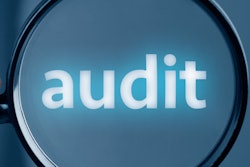 Dr. Giles Maskell.
Dr. Giles Maskell.
A couple of years ago I was knocked off my bicycle on the way home from work. I was cycling around a roundabout as a car approached. It appeared to be slowing down but at the last minute the driver, who hadn’t seen me, accelerated and drove straight into me from the side. The driver stopped, and as I got gingerly to my feet and started to examine myself and my bike for signs of serious damage, I found myself saying over and over again to him: “Be more careful. You must be more careful.” Even as the words came out, I was aware of their utter futility.
Thinking about the event afterward, I began to wonder whether there might be any parallels between an incident of this sort and the kind of radiological error with which I am only too familiar. In a healthcare context we might have called this a serious adverse incident which could have resulted – but thankfully didn’t – in serious harm. So, conducting a sort of basic root cause analysis, I started to wonder how a repeat of this incident might be avoided in the future. After all, I want to continue riding my bike and don’t want to be knocked off it again.
Several strategies immediately came to mind. First, I should make myself easier to spot – brighter clothing and more lights would be a good start. This has definite parallels in our professional sphere where we employ a wide range of methods to make abnormalities more visible, from sound radiographic technique to the use of contrast enhancement and computer-aided detection.
What about the traffic intersection itself? Without getting too nerdy about this – there is a sizeable literature on roundabout design and cycle safety – I can’t help thinking that a red light instructing the driver to stop would have given me considerably greater protection than the existing roundabout, but traffic lights have their downsides too. Perhaps the radiological equivalent would be choosing the right test for the right indication.
Driver alertness is a factor in many traffic incidents, and clearly the enforcement of laws concerning drink and drug use and the use of mobile phones while driving should help. Modern cars increasingly have driver drowsiness detection measures, ranging from systems to monitor how the car is being driven to methods such as the continuous assessment of blink patterns. It seems likely to me -- and probably appropriate -- that in the future PACS workstations will be fitted with similar systems that will advise radiologists when they are displaying signs of fatigue and perhaps even enforce breaks.
Safety-related technology can also apply to the car as well as the driver. Increasingly, modern vehicles are fitted with proximity sensors causing the vehicle to brake when an object is detected immediately in front of it, without needing any input from the driver. Then, of course, there are features such as airbags to mitigate the effect of an impact if one cannot be avoided. Applying notions of automation to our own practice as radiologists starts to feel a little uncomfortable. Would we tolerate a system, for example, that prevented us from verifying a report until each and every computer prompt had been assessed and either accepted or dismissed? The concept of driverless cars has moved from science fiction to reality in a fairly short time. Most of us still believe that fully automated radiology reporting without human input is still some way off.
I may have stretched a few points in the course of this discussion, but there are some principles that apply to considerations of safety in any context. I find it a little bit depressing how often discussions about avoiding error in radiology fall back on the notion of encouraging “vigilance.” There are many ways of avoiding accidents and incidents but simply telling people to be more careful is not one of the more effective.
Dr. Giles Maskell is a consultant radiologist at Royal Cornwall Hospitals National Health Service (NHS) Trust, Truro, U.K. He is a former president of the U.K. Royal College of Radiologists. Competing interests: None declared.
The comments and observations expressed herein do not necessarily reflect the opinions of AuntMinnieEurope.com, nor should they be construed as an endorsement or admonishment of any particular vendor, analyst, industry consultant, or consulting group.



















